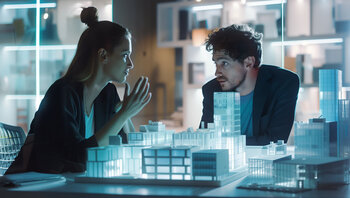
SERVICES
A single source for consulting and implementation
We consult. We implement. And we do both, if your project requires it.
Are you still working to find the right strategy to future-proof your company or organization? Are you wondering how best to integrate sustainability and climate protection? Or do you need a consulting partner who can provide comprehensive advice on risks and technical issues – and implement solutions as well, if necessary? If so, you will find the right service to meet your challenge in our broad range of fields of expertise.
Are you involved a construction project - in an existing building or a new build? Our experts will support you in realizing your project. With EPCM as extended general planning or project solutions such as project management and control, construction management or special solutions in the real estate, infrastructure and industry markets.
Discover our services: consulting and implementation.
Let's talk.
We look forward to hearing from you!

